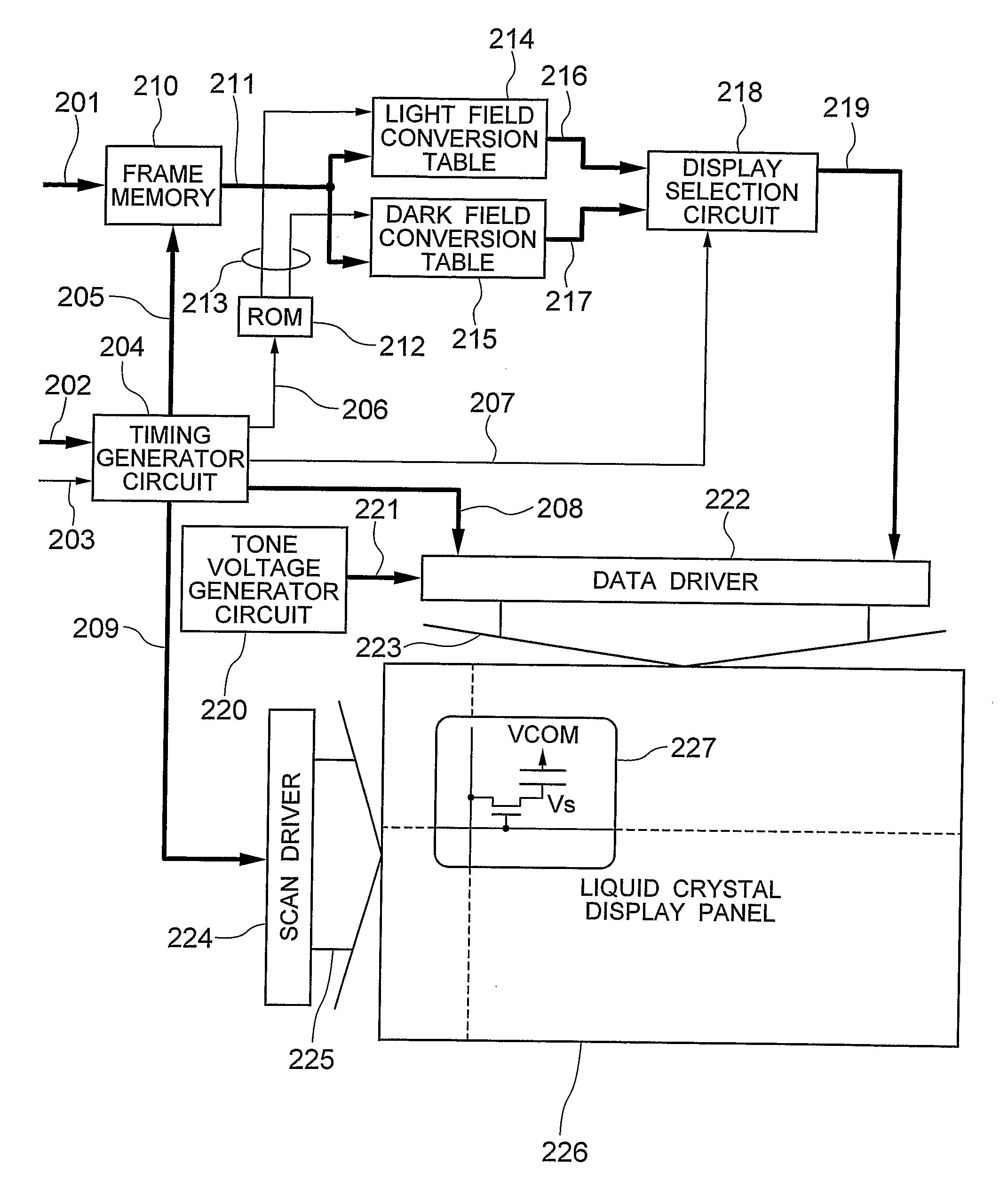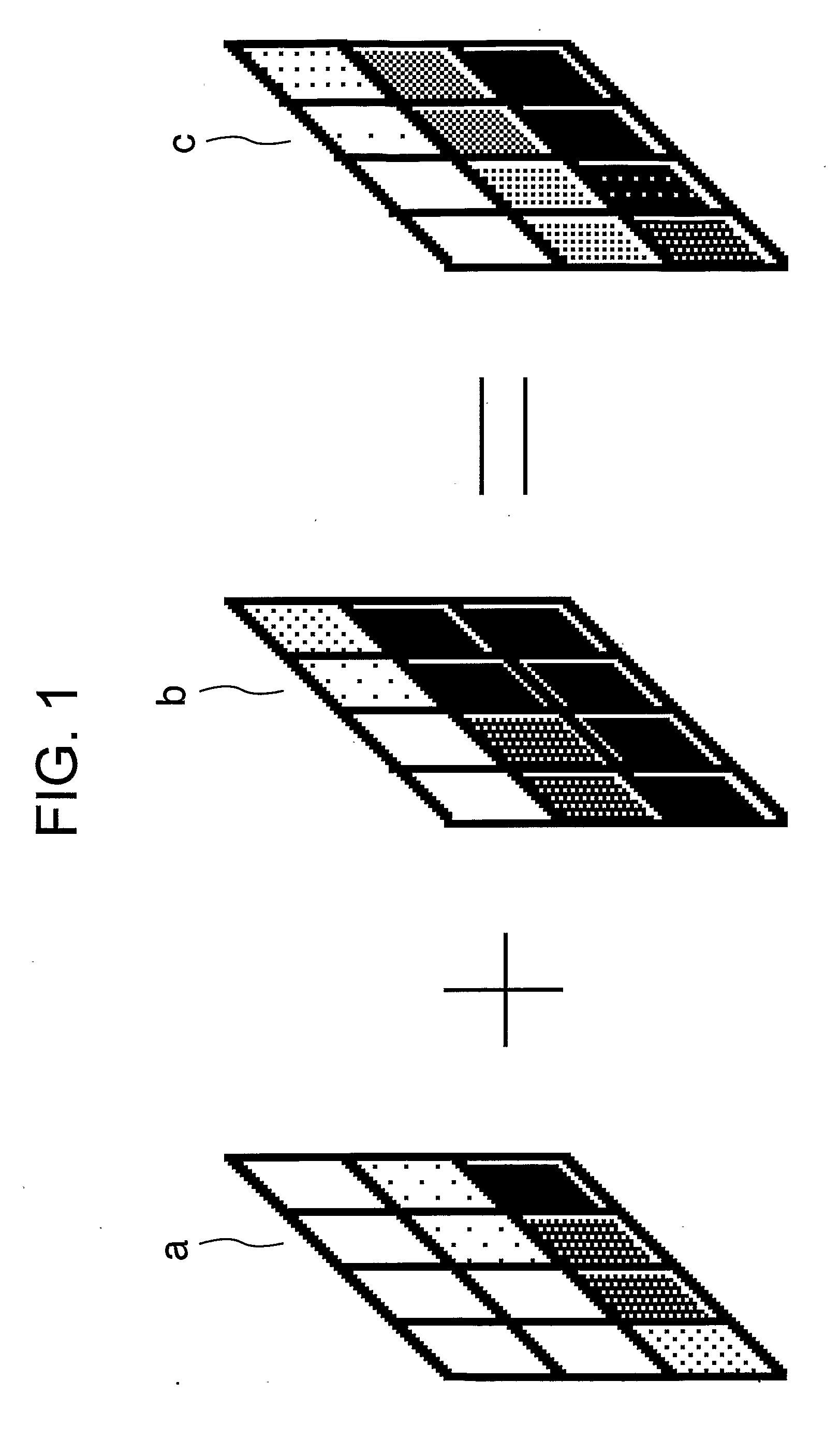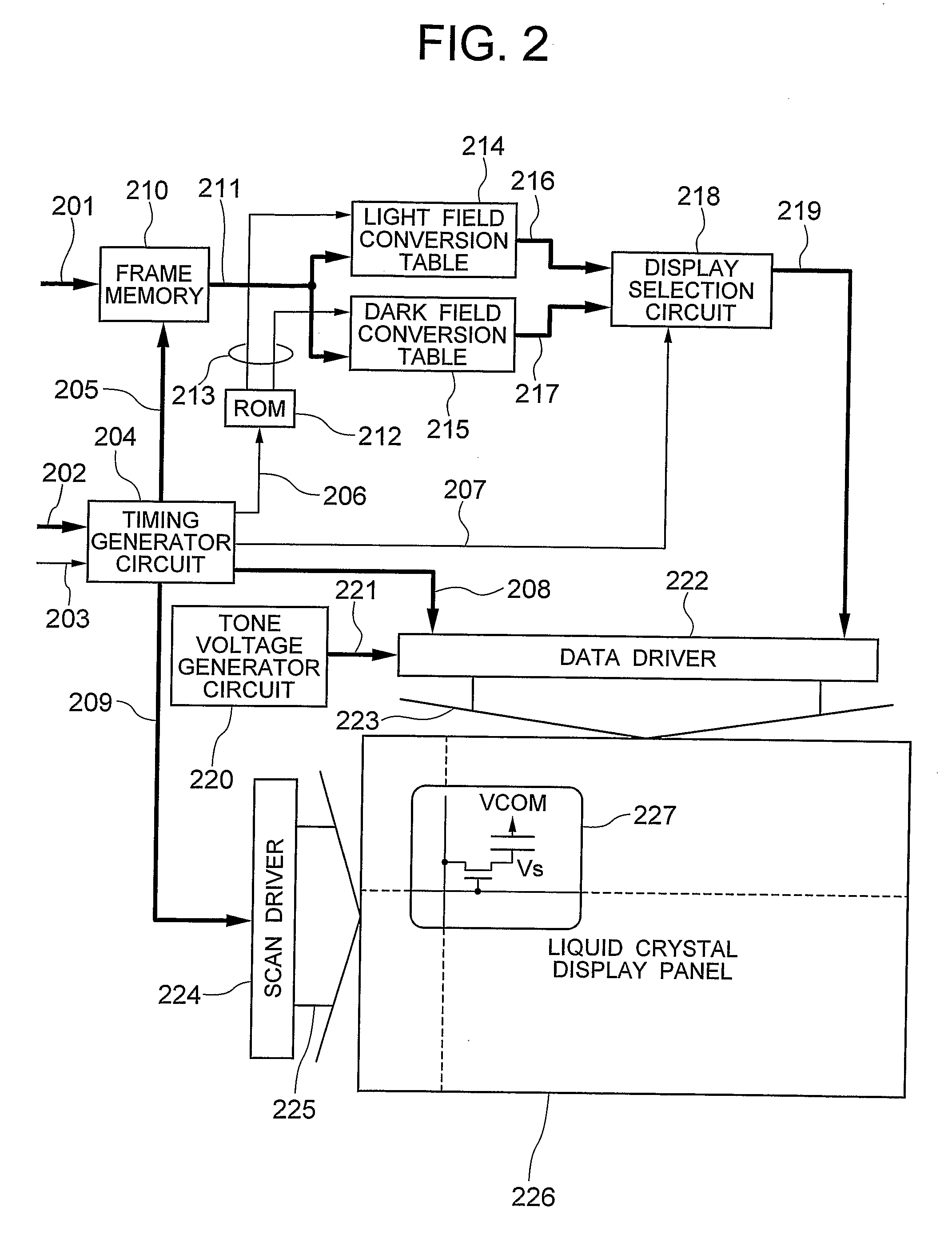Display Device
a display device and display technology, applied in the field of display devices, can solve the problems of reducing the display quality, increasing the power consumption according to the raised luminance, and requiring a massive amount of work to cope, so as to reduce the blurredness of moving images, suppress the effect of the luminance reduction and the increase of the power consumption
- Summary
- Abstract
- Description
- Claims
- Application Information
AI Technical Summary
Benefits of technology
Problems solved by technology
Method used
Image
Examples
first embodiment
[0084]The embodiments of the present invention arranged in the case of driving one frame with two fields will be described with reference to FIGS. 1 to 12.
[0085]FIG. 1 shows the dynamic luminance and the visual luminance of each field of the display device consisting of 4×3 pixels. In FIG. 1, a denotes the dynamic luminance of the light field, b denotes the dynamic luminance of the dark field, and c denotes the visual luminance. In this embodiment, one frame is composed of two fields, and the data is displayed so that the dynamic luminance of one field is constantly lighter than or equal to the dynamic luminance of the other field with respect to any pixel. By repetitively switching these fields with each other, the target visual luminance can be obtained. Hence, with respect to any pixel, the relation of (dynamic luminance of the light field)≧(visual luminance)≧(dynamic luminance of dark field) is established. Instead of two fields for one frame, three or four fields for one frame ...
second embodiment
[0122]In turn, the description will be oriented to the different conversion algorithm of the display data about the light field and the dark field from that of the first embodiment through the use of the relation among the input display data 201, the light field display data 216 and the dark field display data 217 shown in FIG. 14.
[0123]In the field conversion described in the first embodiment, the conversion is carried out on the condition 1. On the other hand, the second embodiment is conditioned to realize the visual luminance corresponding with the input display data in the combination of the light and the dark fields, obtain the dynamic luminance that becomes as close to Tmin as possible as the dark field, and improve the moving image performance in the case of changing the tone into the white luminance (255 tones). This condition is referred to as the condition 2. To realize the condition 2, in this embodiment, the maximum value of the static luminance in the dark field is Tma...
third embodiment
[0125]In turn, the description will be oriented to the different conversion pattern from those of the first and the second embodiments through the use of the relation among the input display data 201, the light field display data 216 and the dark field display data 217 shown in FIG. 15.
[0126]In the meantime, as the typical frame frequencies of the broadcast wave are known the NTSC system, the PAL system and the SECAM system. In the NTSC system, the scan frequency of one screen (which is a field frequency of the so-called interlaced scan system, though it is different from the field frequency used in this specification) is about 60 Hz. When driven in two fields, the frequency of one field is about 120 Hz. On the other hand, the scan frequency of one screen in the PAL system or the SECOM system is about 50 Hz. When driven in two fields, the frequency of one field is about 100 Hz. As the dynamic luminance in the dark field is being lowered by using the conversion algorithm of the first...
PUM
 Login to View More
Login to View More Abstract
Description
Claims
Application Information
 Login to View More
Login to View More - R&D
- Intellectual Property
- Life Sciences
- Materials
- Tech Scout
- Unparalleled Data Quality
- Higher Quality Content
- 60% Fewer Hallucinations
Browse by: Latest US Patents, China's latest patents, Technical Efficacy Thesaurus, Application Domain, Technology Topic, Popular Technical Reports.
© 2025 PatSnap. All rights reserved.Legal|Privacy policy|Modern Slavery Act Transparency Statement|Sitemap|About US| Contact US: help@patsnap.com



